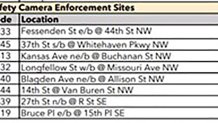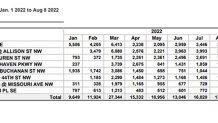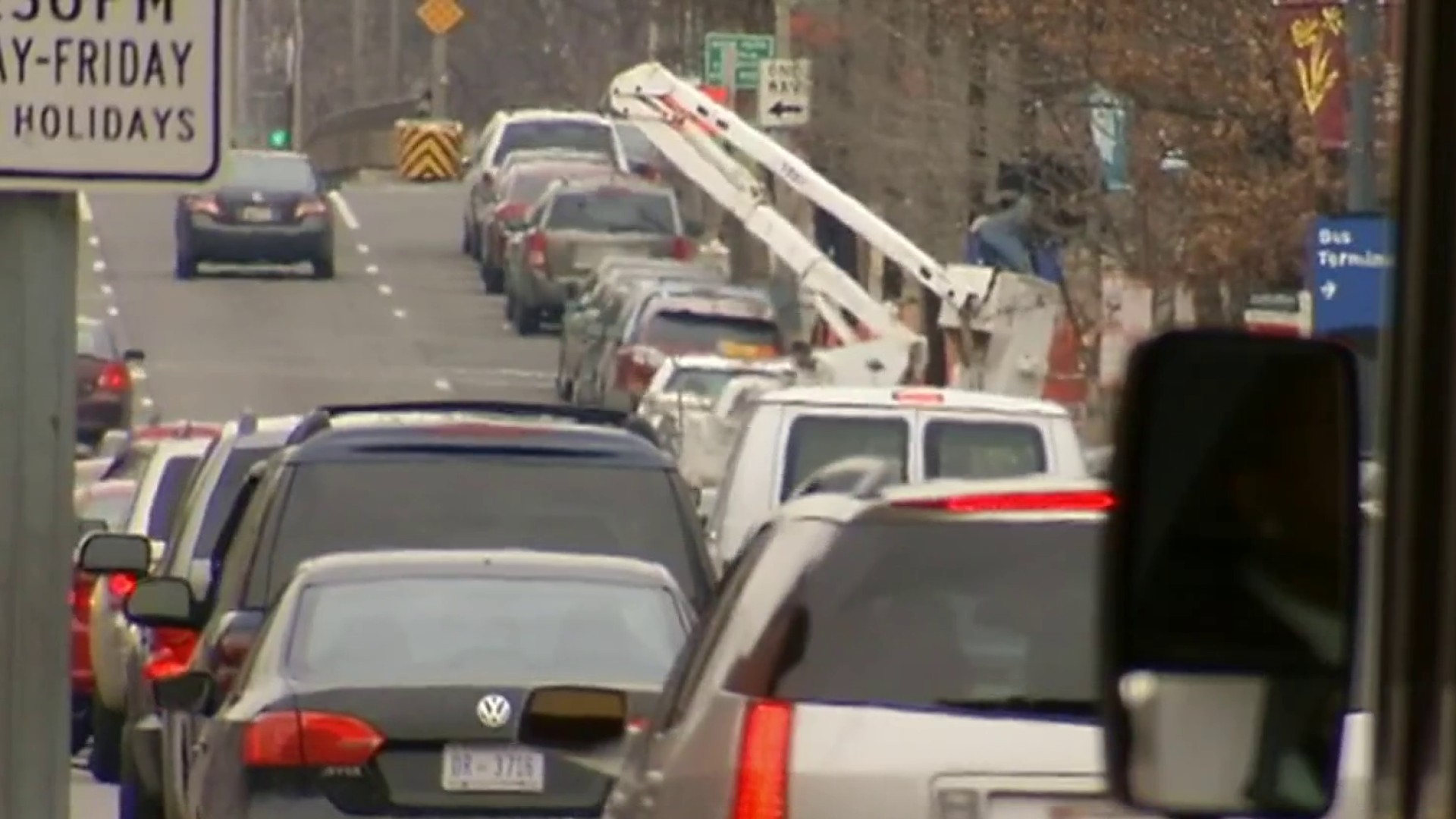New numbers obtained by the News4 I-Team show how many drivers are being cited at stop sign cameras in the District – a hot button issue the I-Team has covered for years.
All agree everyone should be stopping but questions remain on where those cameras are located and if they're fair.
At one stretch of Blagden Avenue NW, complaints about the stop sign camera roll just as much as the traffic does.
"I always make a stop,” said driver Lily Rowny.
We're making it easier for you to find stories that matter with our new newsletter — The 4Front. Sign up here and get news that is important for you to your inbox.
As she talked to News4, a number of others approached about their citations, including one guy in a truck who shouted, "I had to appeal it all the way to the top and won," as he drove by.
The I-Team has documented the chorus of complaints about stop sign cameras for almost two years. No one the I-Team talked to said drivers should be allowed to roll through a stop sign.
But Rowny, who recently received three stop-sign camera tickets on Blagden, thinks something is off.
Transportation
Reporter Adam Tuss and the News4 team are covering you down on the roads and in transit.
"You know, it’s fine when it's actually catching people who are not following the law, but if they're stopping, you know, it's they shouldn't be getting tickets,” she said.
Right now, the city has eight stop-sign cameras around the District.

Through a public records request, the I-Team found the cameras already issued 120,671 citations through early September. That totals at least $12 million, not counting fines that might have increased after not being paid.

Advisory Neighborhood Commission 4D Vice Chair Jonathan Nobil said stop-sign cameras are a topic he often hears about.
"As ANC commissioner, it’s been one of the biggest issues that we’ve dealt with,” he said.
Nobil’s district includes a stop-sign camera on Kansas Avenue NW that has generated more than 11,000 citations this year.
"I don't think stops on cameras are a wise policy, candidly,” Nobil said. “Or if we're going to do that, then we should apply them evenly across the city, and there should be much more transparency about why these locations were selected and what the ultimate goal is."
The I-Team found four of the stop-sign cameras are in Ward 4. The D.C. Department of Transportation said it picks camera locations based on traffic safety assessments and the cameras could be used for “traffic calming.” An agency spokesperson also said, “All stop-sign camera detection systems are calibrated and tested by a third-party organization for accuracy yearly. The equipment is reviewed daily for performance, which includes reviewing images for clarity as well as reviewing video that confirms that the vehicle did not come to a complete stop.”
"At the end of the day, automated enforcement has to have people's confidence that it works so that it is about safety, not about just trying to get revenue," said D.C. Council member Charles Allen.
He sits on the District’s Transportation and Environment Committee and said the sheer number of tickets point to the fact that some drivers aren’t stopping completely. But he would welcome a review by DDOT.
"When they see that a speed camera, or a stop sign, is just writing ticket after ticket after ticket, that should be a sign to DDOT that something is wrong. It’s either designed wrong, it’s not being implemented correctly,” said Allen.
"I've tried to fight for those tickets, and they've just said, ‘Well, you didn't stop,’" said Rowny.
Drivers can review the images and video attached to the citation on a public website, according to DDOT. Rowny said there needs to be more education about what exactly the stop-sign cameras require to avoid a ticket.
Regulations say drivers have to make a complete stop before the white line or crosswalk. If there's no line, drivers have to stop before the posted sign.
DDOT Responds to News4 Questions About Stop-Sign Cameras
- Are these cameras regularly being monitored/adjusted/recalibrated?
All stop sign camera detection systems are calibrated and tested by a third-party organization for accuracy yearly. The equipment is reviewed daily for performance, which includes reviewing images for clarity as well as reviewing video that confirms that the vehicle did not come to a complete stop – cessation of all-wheel movement behind the painted stop bar. The camera software used for automated stop-sign enforcement determines if the vehicle is approaching the stop sign and intersection at a speed that it will not come to a full and complete stop. The software activates a video capture of the incident prior to, before and after passing the stop sign. The video is the primary evidence and is independently vetted by three legal examiners before a notice of infraction is issued. - What’s the criteria for selecting these locations for the cameras?
Stop-sign-enforcement cameras are recommended after a traffic safety assessment, which evaluates all potential DDOT safety and traffic calming solutions, is completed. If a stop-sign camera is recommended, a feasibility study is completed to determine if the equipment can be safely deployed at the location. When feasible for deployment, a photo enforcement sign is installed on the approach to the camera. The stop-sign camera location is advertised via a press release and deployed with a 30-day warning period before living notices of infractions are issued.
Per DC code 2208.3: Except when directed to proceed by a police officer, a police cadet or an official traffic control device, every driver of a vehicle approaching a STOP sign shall stop at a clearly marked stop line, but if none, before entering the crosswalk on the near side of the intersection, or if no crosswalk, then at the point nearest the intersecting roadway where the driver has a view of approaching traffic on the intersecting roadway before entering the intersecting roadway.
Regulatory Stop Signs (From DMV Manual): When you come to a stop sign, you must make a complete stop at the stop line. If there is no stop line, stop before the crosswalk. If there is no crosswalk, stop before the posted stop sign. Before proceeding, you must yield the right-of-way to any pedestrian or bicyclist that may be in the crosswalk. After ensuring the crosswalk is clear, cautiously proceed to make sure the roadway is clear of vehicles before proceeding through the intersection. - Do you have a sense how many of these tickets (over 120,000 so far this year) have been contested?
DDOT does not have access to this information. DMV handles this information request for adjudication. If a driver receives a notice of infraction, the notice includes instructions to access images of the violation online via public.cite-web.com. The images for each citation include a still shot, a tag identification image, and a video. The video shows the vehicle approaching the stop sign, passing the stop sign and advancing past the stop sign. If the driver wishes to dispute the violation, adjudication procedures are also outlined on the notice.
DDOT encourages all motorists to obey the rules of our roadway, which includes stopping at every stop sign. Everyone deserves to have safer streets to walk along, to get to work, and to play and enjoy our great city.
Reported by Adam Tuss, produced by Rick Yarborough, shot by Steve Jones and edited by Jeff Piper.



